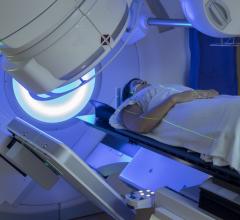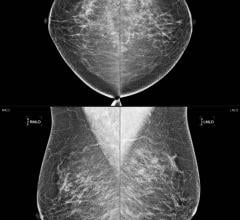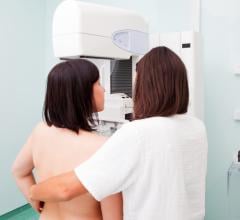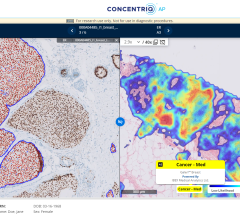
Screenshot of article with conversational manuscript interface (red circle). © AANS.
August 1, 2023 — The Journal of Neurosurgery Publishing Group (JNSPG) is announcing a test of a new artificial intelligence (AI)–driven approach to interacting with scientific articles and invites readers to contribute to the experiment.
Working with Dr. Alexander Winkler-Schwartz (University of Utah), the JNSPG is presenting a “conversational manuscript” that allows readers to investigate a selected, previously published research article. The AI interface appears as a text-entry box at the top of the article on the JNSPG website. Readers may ask relevant questions of the ChatGPT-4 (OpenAI) algorithm and then read the generated responses. A brief anonymous survey allows users to provide feedback about their experience.
In his article “When words leap off the page: conversational manuscripts as a novel interface for scientific publishing,” published today in the Journal of Neurosurgery (https://thejns.org/doi/10.3171/2023.7.JNS231617), Dr. Winkler-Schwartz describes the application of this new technology to scientific manuscripts, writing that by using the interface, “readers can dynamically interact with a scientific manuscript, limited only by their imaginations.”
Dr. Winkler-Schwartz outlines the development of large language models (LLMs) and their implementation as tools for interaction with the ever-growing amount of information available in the modern world. He explains, “Through engaging with these conversational manuscripts, ambiguous concepts can be clarified and contextualized within a broader context, and text can be condensed, highlighted, or translated to another native language, depending on the needs of the reader.”
The application of AI to scientific publications also raises some areas of concern. If such technology is to be useful, it is crucial that the information provided by AI interfaces is accurate. Dr. Winkler-Schwartz therefore discusses the steps taken to ensure that the ChatGPT algorithm avoids “hallucinations,” or the generation of false information due to limitations in working memory. Additionally, his article discusses questions surrounding copyright, intellectual property rights, and legislative responses to AI implementation.
In an accompanying editorial (“Using an AI interface to enhance reader experience: a test case,” https://thejns.org/doi/10.3171/2023.7.JNS231621), JNSPG Director of Publications Gillian Shasby highlights ongoing publisher concerns with protecting copyright and ensuring the accuracy of the scientific record, as well as the precautions the JNSPG has taken to ensure these protections, introduces the test, and invites readers to participate.
The interface for the conversational manuscript may be accessed via the article at the JNSPG website (https://thejns.org/focus/view/journals/neurosurg-focus/54/6/article-pE7.xml).
JNSPG invites readers to participate in this novel approach to engaging with a scientific manuscript.
For more information: www.thejns.org
Related Artificial Intelligence/ChatGPT Content:
AiMed Global Summit 2023 to Focus on “Changing Healthcare One Connection at a Time” in San Diego
AiMed Global Summit’s Lineup Announced
AiMed 2023: Changing Healthcare One Connection at a Time
Find more AiMed23 conference coverage here
The Pros and Cons of Using ChatGPT in Clinical Radiology: An Open Discussion
ChatGPT Passes Radiology Board Exam
JNM Explores Potential Applications for ChatGPT in Nuclear Medicine and Molecular Imaging
New Research Suggests AI Image Generation Using DALL-E 2 has Promising Future in Radiology


 August 29, 2024
August 29, 2024 








